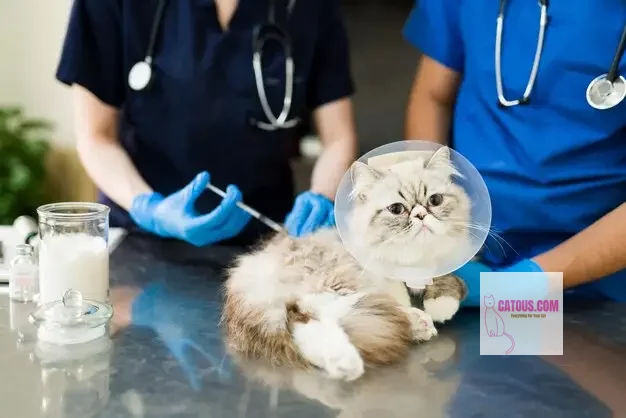Views: 6
Decoding Cat Behavior: Understanding the Secrets Behind Your Feline Friend’s Actions
Unlock the mysteries of cat behavior and deepen your bond with your enigmatic feline companion.
Welcome to the intriguing world of decoding cat behavior, where we unravel the secrets behind the actions of our beloved feline friends. Cats have captivated our hearts for centuries with their mysterious and independent nature. By understanding their behaviors, we can forge a stronger bond and create an environment that fulfills their needs.

Table of Contents
Body Language
Cats communicate a great deal through their body language. By observing their postures and movements, we can gain insights into their current state of mind. Here are some key body language signals:
- Tail position: A high tail signifies confidence, while a low tail may indicate fear or submission.
- Ear position: Forward-facing ears indicate interest or curiosity, while flattened ears can signal aggression or fear.
- Pupil dilation: Dilated pupils can suggest excitement, fear, or arousal, while constricted pupils may indicate aggression or stress.
- Body posture: An arched back with bristling fur can indicate aggression or fear, while a relaxed, loose posture signifies contentment.
Vocalizations
Cats are known for their varied vocalizations, each with its own meaning. By listening closely to their sounds, we can decipher their intentions and emotions. Here are some common vocalizations:
- Meowing: Cats use meows to communicate with humans, expressing various needs or desires.
- Purring: Purring is a sign of contentment and relaxation, often occurring during moments of comfort or affection.
- Hissing: Hissing is a warning sign, indicating fear or aggression in response to perceived threats.
- Chattering: Cats may make a chattering sound when they see prey, expressing excitement or frustration.
Territorial Behavior
Cats are instinctively territorial creatures, and their behavior often revolves around marking and protecting their territory. Understanding their territorial instincts helps us create a harmonious environment. Consider the following:
- Scratching: Cats scratch to mark their territory, stretch their muscles, and maintain their claws.
- Rubbing: Rubbing against objects or humans is a way for cats to leave their scent and claim ownership.
- Urine spraying: Unneutered cats may spray urine to mark their territory or attract mates.
- Aggression towards intruders: Cats may exhibit aggression towards unfamiliar cats or animals that encroach upon their territory.
Play Behavior
Play is an essential part of a cat’s life, serving multiple purposes, including exercise, mental stimulation, and social bonding. Understanding their play behavior helps us cater to their needs. Consider the following:
- Hunting behavior: Cats often engage in play that mimics hunting, pouncing, and chasing, satisfying their predatory instincts.
- Interactive toys: Providing interactive toys allows cats to engage in solo play, keeping them mentally stimulated and physically active.
- Social play: Cats may engage in play-fighting or chasing games with other cats or humans as a form of social interaction and bonding.
- Play and boredom: Lack of play and mental stimulation can lead to boredom and behavioral issues. Regular play sessions are essential for a happy and well-adjusted cat.
Grooming Behavior
Grooming is an integral part of a cat’s routine, serving both practical and social purposes. Understanding their grooming behavior helps us appreciate their self-care rituals. Consider the following:
- Self-grooming: Cats spend a significant amount of time grooming themselves, keeping their fur clean, removing loose hair, and distributing natural oils.
- Social grooming: Cats engage in mutual grooming as a form of social bonding, reinforcing relationships within their social group.
- Excessive grooming: Excessive grooming can be a sign of stress, anxiety, or underlying health issues. Monitor your cat’s grooming habits for any changes.
- Assisting grooming: Regular brushing can help maintain your cat’s coat health, prevent matting, and strengthen the bond between you and your feline friend.
Decoding Cat Behavior: Q&A
1. Why does my cat knead me with its paws?
Kneading is a behavior cats exhibit from kittenhood when nursing. It’s a sign of contentment and relaxation, often associated with pleasant memories and the need to mark you with their scent.
2. Why does my cat bring me dead animals?
Bringing dead animals is an instinctual behavior rooted in a cat’s hunting prowess. It is their way of showing love and providing for their human companions, a behavior that should be appreciated, although not always desired.
3. Why does my cat sleep so much?
Cats are crepuscular animals, meaning they are most active during dawn and dusk. However, they still require plenty of rest and can sleep for up to 15 hours a day to conserve energy for hunting and playing during their more active periods.
4. How do I introduce a new cat to my existing cat?
Introducing cats should be done gradually, allowing them to become familiar with each other’s scent before face-to-face interactions. Use a gradual introduction process, provide separate resources, and seek guidance from professionals if needed.
5. Why does my cat sometimes “zoom” around the house?
Zooming, also known as “the zoomies,” is a burst of sudden energy and playfulness in cats. It’s a normal behavior that allows them to release pent-up energy and engage in spontaneous play. It’s often entertaining to witness!
Conclusion
Decoding cat behavior is an ongoing journey that
deepens our understanding and connection with our feline companions. By paying attention to their body language, vocalizations, territorial instincts, play behavior, and grooming rituals, we can create a harmonious environment that caters to their needs. Remember, each cat is unique, and taking the time to understand their individual behaviors strengthens the bond between you and your enigmatic feline friend.
